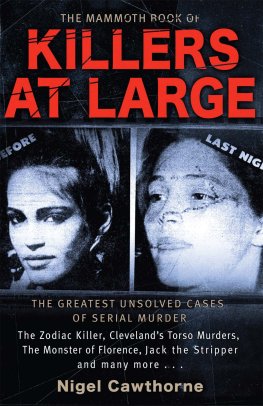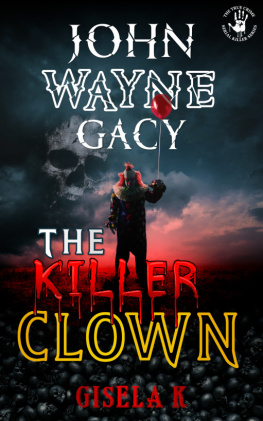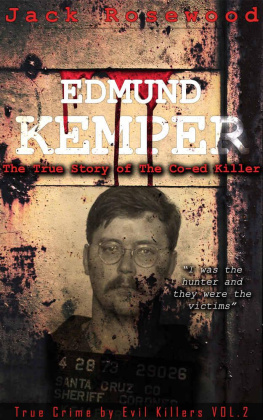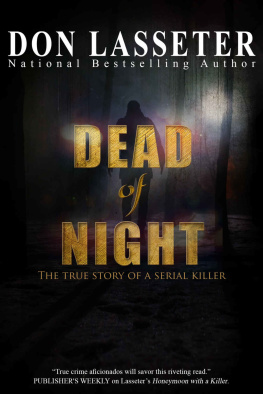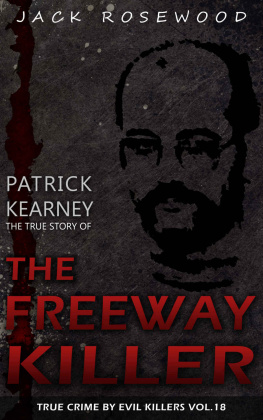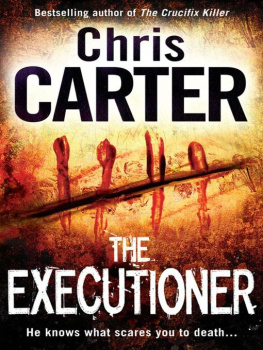
The author and publisher have provided this e-book to you for your personal use only. You may not make this e-book publicly available in any way. Copyright infringement is against the law. If you believe the copy of this e-book you are reading infringes on the authors copyright, please notify the publisher at: us.macmillanusa.com/piracy.
Contents
Acknowledgments
My sincere thanks to People Managing Editor Landon Y. Jones for his continued patience and support. It has been most appreciated.
Also, thanks are due to my editors, Assistant Managing Editor Cutler Durkee, Chief of Correspondents Maria Wilhelm, Senior Editor Jack Friedman, and Senior Editor Joe Treen.
As always, I am grateful to Charles Spicer and the gang at St. Martins, and my agent, Jane Dystel.
Chapter 1
IN the predawn mist, the headlights on the 1984 gray Mazda SE pickup cast an eerie glow as the truck pulled away from 1492 Garden Street. No one saw the driver as he turned down Spruce Lane and inched his way to Bellmore Avenue, heading south. If anyone had, they probably wouldnt have been surprised. In this middle-class neighborhood of East Meadow, Long Island, neighbors were accustomed to seeing the Mazda coming and going at odd hours.
The driver was tired. His face was smudged, his jeans and red flannel shirt stained. For the last hour, hed been loading heavy cargo in the back of the pickup. Hed had to lift a bundle out of a wheelbarrow stored in the garage. A few days earlier, hed wrapped the cargo in a blue tarpaulin, deftly fastening a heavy cord. He was getting pretty good at securing his load. Recently hed bought a book called Ropes & Knots. Alone in his bedroom at night, he practiced.
When the tarp was prepared, the driver turned a lever to open the cap cover of the pickup and dropped the tailgate. It took a while to hoist the tarp inside. The cargo was particularly heavy that night.
The driver tried to be quiet as he went about his work. It didnt really matter. Inside 1492 Garden Street his mother and sister slept soundly. Besides, the driver suspected they would not question him if they heard him rummaging in the garage long past midnight. They seldom questioned him about anything at all.
It was 3:15 A.M . New York State Trooper Deborah Spaargaren pointed the navy patrol car with yellow stripes east on the Southern State Parkway. Spaargaren and her partner, Trooper Sean Ruane, were midway through their 11:00 P.M . to 7 A.M . shift, patrolling the parkways of Nassau and Suffolk counties on Long Island. Under state trooper safety guidelines, they patrolled together until dawn, then alone until the shift ended. Tonight, the patrol was relatively quiet. Sundays usually were.
Spaargaren and Ruane were among the youngest troopers on the force. Spaargaren, twenty-three, had joined the state troopers fifteen months earlier. Ruane, twenty-five, had three years on the job. Already, Ruane had earned his share of accolades. In 1991 he stopped a murder suspect on a road in Sullivan County, not far from Kiamesha Lake, where a Hasidic couple had been brutally slain. The following year the young cop apprehended two convicted killers after theyd escaped from an upstate penitentiary.
Spaargaren and Ruane were among the forty-three hundred state troopers who patrol the highways and parkways in the sixty-two counties of New York State. They were committed to law enforcement.
So when they spotted the Mazda a few hundred yards before the Wantagh exit on the parkway, they observed it with trained eyes. Its speed didnt concern the young cops. The pickup was traveling a few miles above New York States fifty-five-mile-an-hour speed limithardly fast enough to inspire the troopers to issue a summons.
What caught their attention, however, was the back of the truck. Above the bumper, where the license plate should have been, there was nothing.
Driving without a license plate is a minor traffic violation. Still, it wasnt something state troopers overlooked. Especially troopers like Spaargaren and Ruane.
The partners didnt hesitate. Ruane leaned over and snapped the switch activating the red lights atop the roof rack. The lights began to flash. Spaargaren sped up slightly, positioning the patrol car directly behind the Mazda.
The driver of the pickup stole a quick glance in his rearview mirror. His hands clenched the steering wheel a bit tighter. His foot never left the accelerator.
It took a minute before the troopers realized the driver of the pickup had no intention of pulling over. He didnt go faster. He didnt change lanes. He simply continued to drive, seemingly oblivious of the swirling red lights atop patrol car No. 1L35.
Ruane tried again. He activated the siren. It fractured the deadly quiet of the late hour. But the driver showed no reaction. The pickup continued at a steady clip.
Ruane reached for the loudspeaker portion of the radio. He keyed the mike. His voice resonated along the parkway, tight with anger.
Pull over to the side of the road, Ruane demanded.
Again, no reaction. The troopers glanced at each other, uneasy. This was turning out to be much more than a routine traffic stop. No doubt, the driver of the pickup had something to hide.
Ruane reached again for the radio. He called in a report to the sergeant on duty in the communications section of state trooper headquarters, Troop L, in East Farmingdale.
Car 1L35 to Farmingdale, Ruane said.
The trooper gave a terse description of the situation: Driver, male. Operating a gray Mazda pickup. No plate. Refuses repeated orders to pull over. 1L35 requests backup. Ruane signed off with his shield number.
Headquarters reacted swiftly. Within minutes, three state trooper cars were dispatched to join the chase. The sergeant on duty at the command post also notified Nassau County police. They, too, sent officers to the scene.
Despite the growing police convoy behind him, the driver of the Mazda appeared nonplussed as he continued east on the Southern State Parkway. Then, without warning, he veered to the right, speeding up the off-ramp of exit 28 in Wantagh. Ignoring the stop sign at the top of the hill, the driver sailed down Wantagh Avenue, angling north.
For the next ten minutes, the driver snaked through back roads in residential neighborhoods, trying to shake the cops. It was useless; they were directly behind him. When he reached Old Country Road in Mineola, a busy thoroughfare, the driver made a choice. After a moments delay, he swerved the truck sharply to the right, rounding the corner of Washington Avenue and Old Country Road.
He swung too wide. The Mazda crashed into a wooden light pole, knocking it to the ground and shattering glass all over the sidewalk. The driver was thrown back in his seat, his hands still gripping the steering wheel.
Behind him, at least half a dozen police cars screeched to a halt. In seconds, a team of state troopers and Nassau County cops encircled the pickup.
The driver did not move. Through the trees, in the darkness of the early morning, he could see lights blazing in front of the Nassau County Criminal Courthouse half a block away.
* * *
Trooper Ruane reached the truck first. Revolver poised, he peered into the cab. With his free hand, he opened the door.
Get out, he barked.
Joel Rifkin did as he was told. He climbed out, hands raised. Without being asked, he lay facedown on the pavement, arms and legs spread. Troopers frisked him. They found nothingno weapons, no drugs. It seemed odd. What did Joel Rifkin have to hide?


